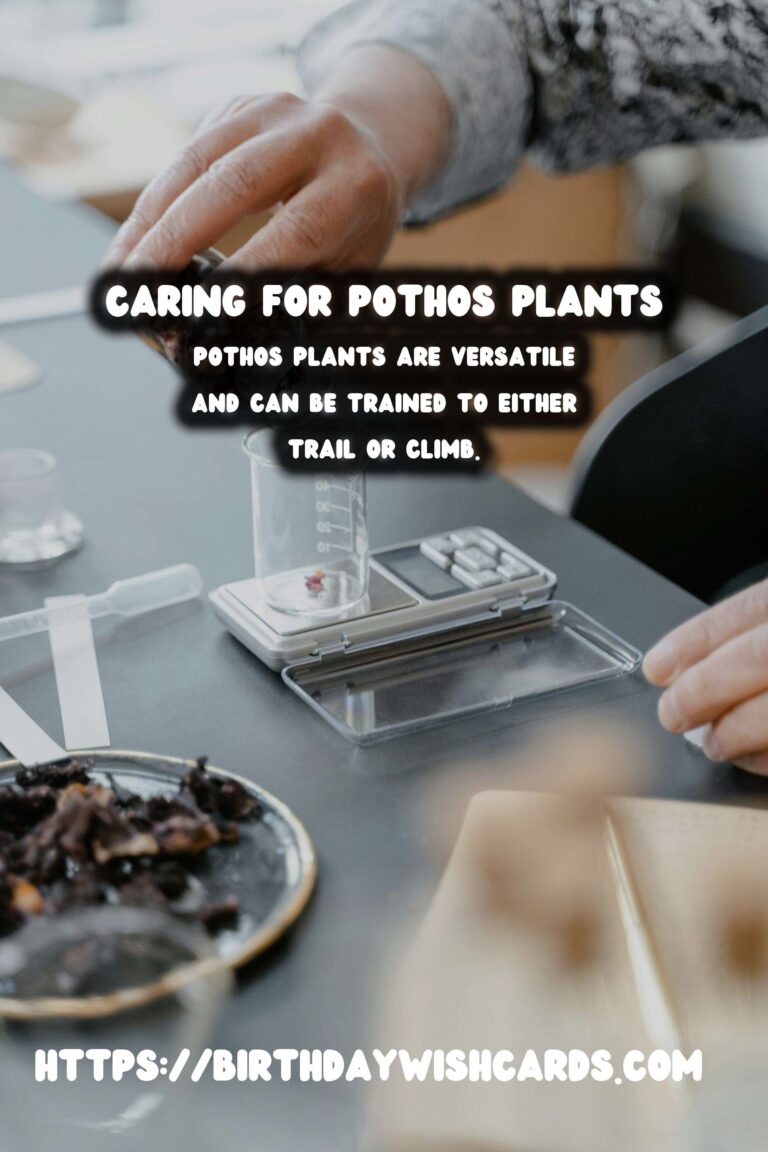
Pothos plants, known for their vibrant green leaves and easy maintenance, are a popular choice among plant enthusiasts. These versatile plants can be trained to either trail or climb, offering flexibility in how they can be displayed in your home or garden. Understanding the differences between trailing and climbing Pothos, and how to care for each, will help you maximize their beauty and health.
Understanding Pothos Plants
Pothos, scientifically known as Epipremnum aureum, are native to the Solomon Islands. They are often referred to as Devil’s Ivy due to their resilience and ability to thrive in a variety of conditions. Pothos are characterized by their heart-shaped leaves, which can vary in color from deep green to variegated patterns of white, yellow, or pale green.
These plants are incredibly adaptable, making them suitable for both indoor and outdoor settings. They are particularly appreciated for their air-purifying qualities and their ability to grow in low-light environments.
Trailing Pothos Plants
Trailing Pothos are often used in hanging baskets or placed on high shelves where their vines can elegantly drape down. This growth style is ideal for those looking to add a touch of greenery to elevated spaces or create a cascading effect in their decor.
To care for trailing Pothos, ensure they receive indirect sunlight and are watered regularly. Allow the soil to dry out between waterings to prevent root rot. Pruning the vines will encourage fuller growth and help maintain the desired length.
Climbing Pothos Plants
Climbing Pothos, on the other hand, are typically trained to grow vertically, often with the support of a stake, trellis, or moss pole. This growth style is perfect for adding vertical interest to a room or garden space.
Climbing Pothos require similar light and watering conditions as their trailing counterparts. However, they benefit from occasional misting to increase humidity, especially if they are growing indoors. Providing a structure for them to climb will support their upward growth and can help create a striking visual feature.
Choosing Between Trailing and Climbing
The decision to train your Pothos to trail or climb depends largely on your personal preference and the space available. If you have limited floor space or want to add greenery to higher areas, trailing Pothos are an excellent choice. Conversely, if you have vertical space to fill or want to create a living wall, climbing Pothos will serve you well.
Regardless of your choice, both trailing and climbing Pothos can enhance your living space with their lush foliage and ease of care.
Conclusion
Whether you opt for trailing or climbing Pothos, these plants are sure to bring life and color to your environment. Their adaptability and minimal care requirements make them suitable for gardeners of all experience levels. With the right conditions and a little guidance, your Pothos plants can thrive and become a standout feature in your home or garden.
Pothos plants are versatile and can be trained to either trail or climb. Trailing Pothos are ideal for hanging baskets, while climbing Pothos add vertical interest. Both trailing and climbing Pothos require indirect sunlight and regular watering. Choosing between trailing and climbing Pothos depends on personal preference and space availability. Pothos are known for their air-purifying qualities and resilience. 









#PothosPlants #IndoorGardening #PlantCare #TrailingPlants #ClimbingPlants




